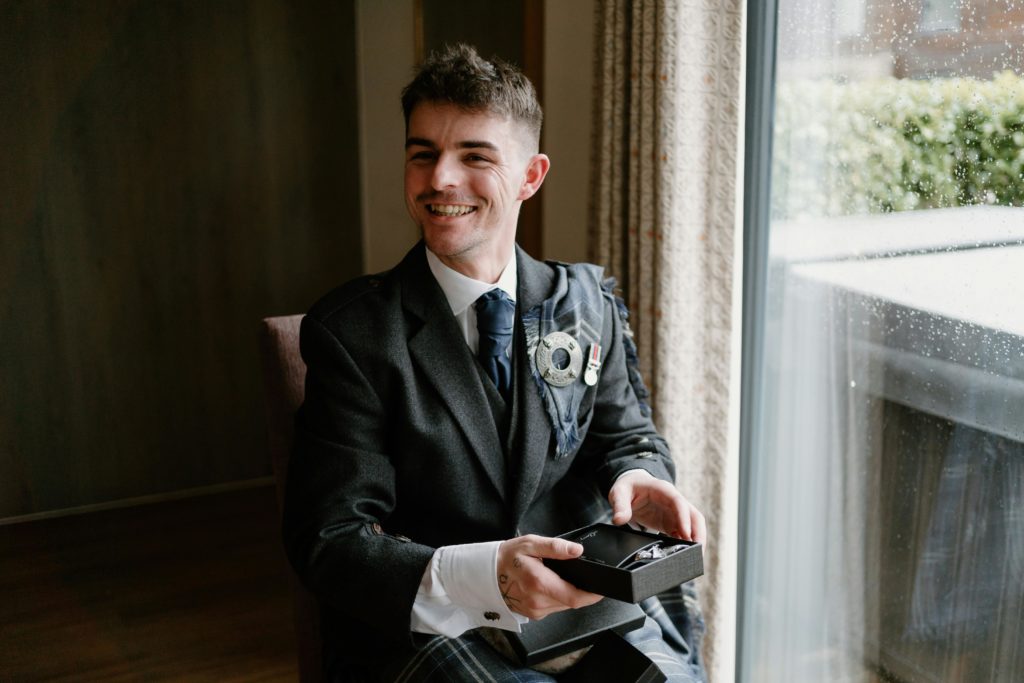Commercial Feature
How Scots abroad maintain kilt-wearing traditions

The people of Scotland are identified for their culture and traditions. And one of the prominent symbols is the kilt. Scots are seen in every part of the world. They carry tier tradition with them no matter where they go or live even though they live far away from tier homeland. These Scots stay connected to tier cultural practices, including wearing kilts. Many Scots abroad wear kilts to promote their culture and tradition and keep it alive even when away from home.
This brings people together and makes connections between tier and tier culture.
History of kilts:
Kilts have been worn for many years, they started as practical garments for Scottish islands. The ars weather of Scotland was the main reason behind the design. the original kilts were known as the great kilt, much longer than the one we see today. it was a full lent piece of clothing that was worn in different ways, depending on the weather and the wearer’s need.
Kilts then becomes a symbol of Scottish identity. Over time, different clans have used specific tartan patterns to show tier identity. This made kilts for men even more famous for people all over the world associate kilts with Scotland
Kilt-wearing tradition in different countries:
Scottish traditions are now in many countries. In the United States, there are many Scottish people. Many American Scots wear kilts on special days like Tartan Day. Tartan Day parades have many people wearing kilts. These parades are in cities like New York, where there are many Scottish people.Canada is another country where the Scottish traditions are alive and well. With a large Scottish population, it is not uncommon to see kilts at weddings, parties, and cultural events. The Canadian Scots feel pride in their heritage and kilts as part of their culture.
In Australia and New Zealand, the Scottish community has also maintained their culture by wearing kilts on tier special events. The Highland Game a traditional Scottish event featuring athletic competitions and cultural displays, are popular in these countries. kilts are worn proudly at festivals making them feel like they are part of Scotland.
The Role of Scottish Societies and Clubs:
In keeping the tradition of wearing kilts for men among Scots alive, the organisation and community have played a major role. They host events, provide resources and most importantly organise events where kilts are worn. For many Scots abroad, joining clubs or Scottish society is like connecting with their homeland and its culture.
Kilts in Modern Scottish Wedding Abroad:
Weddings are one of the most important events in Scottish society where kilts are worn as formal wear. For Scots abroad, wedding events are incomplete without a groom and is best mans wearing kilts on their special day. The traditions have travelled with Scots to every corner of the world. Makin kilts are a common sight at weddings from America to Australia.
The Influence of Scottish Festivals on Wearing Kilts:
Scottish festivals are a great way for Scots who live far away to keep their traditions alive. These festivals have music, dancing, and other Scottish things. Kilts are very important at these events.In many countries, Scottish festivals are a yearly highlight for the Scottish community. These festivals show Scottish culture, whether they are in New Zealand or Canada. People wear kilts with pride, feeling like they bring a part of Scotland to their new home.
Kilt-Wearing in Popular Culture
Kilts have made their way into popular culture, especially in countries with a strong Scottish presence. From movies to TV shows, kilts are often used as a symbol of Scottish identity. This visibility in popular culture has helped keep kilt-wearing traditions alive among Scots abroad.
Movies played a big role in popularizing the kilt outside of Scotland. These portrayals have made kilts recognizable around the world, and for Scots abroad, seeing their culture represented on screen can be a source of pride. It also encourages them to wear their kilts more often, knowing that their heritage is appreciated by a global audience.
Challenges and Adaptations

Maintaining kilt-wearing traditions abroad isn’t always easy. Scots living in different countries face various challenges. One of the biggest challenges is the weather. In hot climates, wearing a heavy woolen kilt might not be practical. To deal this many Scots abroad have turned to lighter materials like cotton or linen. These adaptations allow them to wear their kilts comfortably.
Another challenge is accessibility. Finding a good kilt maker or getting the right tartan can be difficult in some countries. Many Scots abroad rely on online shops or have their kilts shipped from Scotland. Despite these challenges, they remain committed to wearing their kilts and keeping their traditions alive.
These adaptations show the resilience of Scots abroad. Even when faced with challenges they find ways to stay true to their heritage. It proves that the kilt is more than just clothing. It’s a symbol of pride that can withstand test of time.
Conclusion:
For Scots abroad, the kilt is a way to stay connected with heritage. It is a symbol of pride that they can carry with them anywhere. The kilt is important at weddings, festivals and in everyday life. It helps to keep Scottish traditions alive around the world.
The kilt is an important part of Scottish identity. Scots will live in different places, but kilt will stay the same. This tradition is old and strong. It will continue to make Scots proud for many years to come
 News / Cambridge climbs to third in world Uni rankings11 October 2025
News / Cambridge climbs to third in world Uni rankings11 October 2025 News / Pro-Palestine protesters stage city centre rally12 October 2025
News / Pro-Palestine protesters stage city centre rally12 October 2025 News / Tompkins Table 2025: Trinity widens gap on Christ’s19 August 2025
News / Tompkins Table 2025: Trinity widens gap on Christ’s19 August 2025 Music / South London comes alive at Rally Rally Rally music festival11 October 2025
Music / South London comes alive at Rally Rally Rally music festival11 October 2025 Film & TV / The curious incident of The Doctor in the TARDIS11 October 2025
Film & TV / The curious incident of The Doctor in the TARDIS11 October 2025





